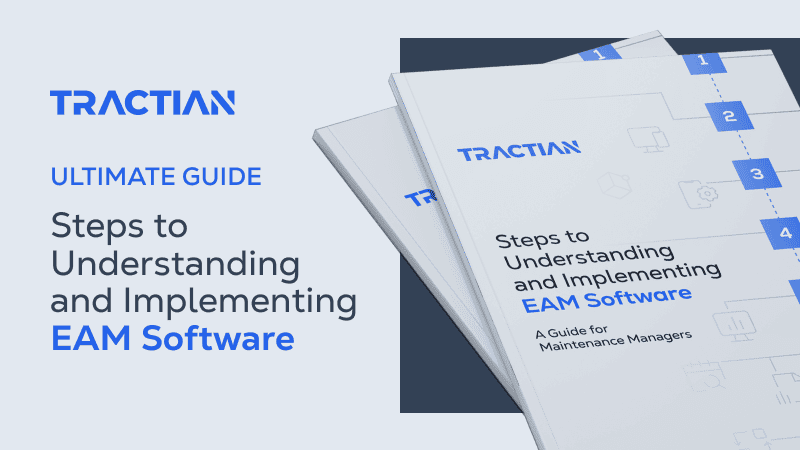Every industrial operation’s management team experiences pressure coming in from all sides. They're held to tight deadlines, high-output targets, and rigorous compliance demands. But when quality begins to slip, none of that matters. Final products that were supposed to ship end up stuck in rework. Worse still, if lower-quality products are shipped, many will face eventual returns.
Quality management can’t be relegated to a process item on a checklist. Its effect is much deeper. Because of this, it’s not managed in the same way as a scheduled deadline or quota.
Quality management is a continually operating structure that supports how teams deliver products. Effective quality management demands that customer expectations are met time after time. However, the unfortunate truth is, most companies don’t realize how many nuanced gaps in their processes and procedures are dragging their quality down.
In this article, we’ll break down the fundamentals of a comprehensive quality management process. We’ll illuminate what principles actually drive results, how to build consistency into your systems, and where most operations start to fall short.
What is Quality Management Process?
A quality management process is what companies implement to keep their products consistent, blending the need for operational compliance and efficiency with customer satisfaction.
Quality Management is not a department (that’s quality assurance). Rather, it's a framework embedded throughout a business’ operations - from the way raw materials are handled to the way finished goods leave the plant.
In its most basic form, quality management is about setting standards, measuring performance, and correcting deviations before they escalate into customer complaints or costly recalls. And those standards are for everyone, including operators, engineers, plant directors, etc. Everyone at the company plays a role in making sure the process actually is executed effectively..
The strongest systems integrate real-time data with clear procedural activities such as inspections, audits, corrective actions, documentation, and reviews.
Each activity requires commitment to a continuous improvement mindset that must drive every decision.
When implemented the right way, quality management prevents issues, supports regulatory requirements, and builds a level of reliability that protects both the bottom line and the reputation of the company.
Seven Principles of Quality Management
Behind every high-performing quality system lies an unchanging foundation. Regardless of the industry or the complexity of the operation, the seven principles of quality management maintain alignment with long-term results.
These principles act as practical levers that, when applied with consistency, bring structure to decision-making, drive accountability, and anchor the entire operation around continuous improvement.
Let’s examine each one:
1. Customer Focused
Everything starts here. When the customer’s experience is the focus, the quality of the product is defined by the customer, not the manufacturer. If the product doesn’t meet customer requirements-whether performance, durability, compliance, or delivery-it doesn’t matter how efficient the process is.
That’s why quality management needs to be aligned with customer expectations at every level. From setting specifications to final inspection, the entire chain needs to be oriented toward delivering value that matches or exceeds what the customer actually needs.
The entire operation should be designed into a feedback loop.
Data collected from customer satisfaction metrics, returns, and performance in the field should feed directly into planning, design, and production strategies. That’s how the voice of the customer becomes part of the process.
2. Engaged Leadership
Executives, plant directors, and department heads must take ownership of the quality management system to succeed.
They must be responsible for setting priorities, allocating resources, and making sure quality goals are tied to the actual business strategy.
Leadership must enable their workforce as much as, or more than, the direction they provide.
Teams need clarity on what’s expected, space to work proactively, and support when it comes to escalating risks or proposing improvements. When leadership sets the tone, quality becomes a company-wide responsibility, not just one department’s problem.
3. Empower People
You can’t build a culture of quality without involving the people closest to the work. The teams on the floor, in maintenance, and in procurement are the ones who see the problems first and are in the best position to fix them.
An effective quality management process doesn’t merely assign tasks. It establishes a framework where individuals are trained, encouraged to report deviations, and empowered to propose improvements.
When empowerment is genuine-not merely symbolic-teams shift from reacting to issues to proactively preventing them.
This is especially critical when adopting more advanced quality tools or methodologies like Lean Six Sigma. The success of those systems depends on how deeply teams are involved in the day-to-day execution.
4. Process Orientation
Processes determine where higher quality is achieved or neglected. Adopting a process-oriented approach involves examining individual tasks and understanding how activities link together or share impact across departments, teams, and systems.
Instead of treating problems on an ad hoc case-by-case basis, this process principle pushes teams to examine entire workflows. Every factor, including inputs, outputs, dependencies, and risks, must be scrutinized. A process orientation is a way of thinking prioritizes repeatability, predictability, and system-level performance.
Mapping processes, defining controls, and standardizing best practices are part of it. But the real value comes from using those maps to identify impacts to quality, such as bottlenecks, handoff failures, and deviations.
5. Continuous Improvement
The fifth principle formalizes what many high-performing teams already know: staying competitive requires a relentless pursuit to minimize errors, waste, and inefficiencies. A system not improving is a system falling behind.
But improvement only happens when there’s a structure for it-clear metrics, targeted initiatives, and consistent follow-through.
That could mean updating a quality inspection plan based on failure data, adjusting maintenance schedules to prevent recurrence, or implementing a new feedback loop for corrective actions.
Improvement also connects directly to risk management. The goal is to spot what could go wrong before it happens.
6. Evidence-Based Decision-Making
Decisions need to be backed by data-performance metrics, inspection results, audit findings, trend analysis. Without that foundation, quality actions can be reactive, inconsistent, and ultimately ineffective. Intuition has its place, but not in quality management.
This principle is what enables real accountability. When teams can trace a decision back to data, it’s easier to evaluate its impact, make adjustments, and scale successful practices.
In regulated environments, this also provides the necessary documentation to meet compliance and audit requirements.
With the rise of condition monitoring and industrial AI, access to real-time data is becoming a game-changer. Decisions that used to take days now happen in minutes, based on live inputs rather than historical guesses.
7. Value Relationships
The final principle recognizes that building and maintaining strong relationships across the value chain is critical to ensuring consistent results. Relationships with suppliers, partners, and contractors all influence outcome quality.
Relationships are about collaboration. In an industrial environment, that means sharing data, aligning goals, and working together to resolve issues upstream before they reach the plant floor.
This is especially relevant for companies implementing quality management systems under ISO 9001 or similar standards. Supplier performance becomes part of the audit trail, and relationship management shifts from transactional to strategic.

Quality Management Methodologies
When it comes to execution, methodologies make the difference. They turn quality from a concept into something that actually works on the floor.
Each framework described below takes a different approach to controlling quality and improving processes. And depending on the maturity of your operation and the problems you’re trying to solve, they work best when layered together (though they’re not interchangeable).
Six Sigma
Six Sigma removes variation from processes by using data to pinpoint what’s going wrong and why. It’s methodical, analytical, and often used in environments where quality requirements are non-negotiable.
Six Sigma is built around the DMAIC cycle: Define, Measure, Analyze, Improve, and Control. Each step is designed to build clarity around a problem, isolate the cause, and implement changes that stick.
Six Sigma teams rely heavily on statistical tools to find flaws and to verify that each fix actually works.
Companies deploying Six Sigma teams can expect fewer defects, tighter process control, and measurable gains in product reliability. It’s a good fit when you're ready to go beyond surface-level fixes and start improving performance in a quantifiable way.
Lean Manufacturing
Where Six Sigma tackles variation, Lean approaches go after waste - in every form. Unused inventory, unnecessary motion, waiting time, rework, overprocessing- all of it drains productivity and chips away at quality.
Lean tools, like value stream mapping and 5S, help teams visualize inefficiencies and remove friction from the system. It’s a hands-on, operator-driven approach that focuses on building flow, improving response time, and standardizing work.
A Lean-principled approach also clears space for stability. Fewer disruptions, faster feedback loops, and smoother handoffs all contribute to more consistent output, even in fast-paced or high-mix environments.
Total Quality Management (TQM)
TQM takes a broader view. It’s not tied to a single toolset but a long-term commitment to embedding quality into the organization's culture.
This means every department is involved in building systems where improvement is driven by continuous learning.
TQM also shifts the focus from individual errors to the processes that allow those errors to happen.
In practice, TQM is less about fixing isolated problems and more about preventing them by improving how people collaborate, how information flows, and how priorities are set.
ISO 9000 Standards
ISO 9000 isn’t a methodology in the traditional sense. It’s a set of international standards that formalizes how quality should be managed and documented across an organization.
For many industrial operations, ISO 9001 is the benchmark. It requires clearly defined processes, risk-based thinking, regular audits, and a closed-loop system for managing nonconformities and driving improvement.
The reason it’s considered a benchmark is that ISO frameworks offer something often missing in fast-moving environments: consistency.
When implemented seriously-not just for the ISO certificate-ISO standards create visibility across departments, hold teams accountable, and provide structure for tracking how well the system is actually working.
Benefits of Quality and Process Management
Implementing a structured quality management process is a commitment. It changes how decisions are made, how teams interact, and how success is measured.
Let's look at a few of these benefits:
1. Fewer Failures, Less Rework
When quality standards are integrated into every step of the process, failures drop. Defects are caught earlier, often before they leave the machine, and root causes are addressed faster.
This leads to fewer reworks, lower scrap rates, and more predictable output.
2. Higher Customer Satisfaction
Meeting customer requirements consistently is a competitive advantage.
Quality management connects product performance to real customer expectations. That connection builds trust, reduces complaints, and creates opportunities for long-term business.
3. Operational Efficiency
Well-managed quality isn’t a drag on productivity. It actually improves it. Processes become more stable, deviations are handled systematically, and teams stop wasting time fighting the same recurring problems.
That stability frees up capacity for continuous improvement and innovation.
4. Stronger Compliance and Audit Readiness
Industries with regulatory oversight like pharma, food, automotive, and aerospace require tight control over documentation, traceability, and process consistency.
A formal quality management system (QMS) provides the structure and transparency that auditors demand, making compliance part of normal operations rather than a last-minute scramble.
5. Better Use of Data
Modern quality systems are champions of measurement. When inspection results, failure rates, and corrective actions are tracked in real time, they create a feedback loop that improves accuracy and speeds up decision-making.
Over time, this builds a valuable data set supporting everything from strategic planning to predictive maintenance.
6. Empowered Teams and Stronger Accountability
True quality doesn’t occur by mandate. It improves when teams are engaged, trained, and empowered to take ownership of their work.
A robust QMS gives structure to that engagement. It makes expectations clear, tracks performance fairly, and reinforces accountability at every level of the operation.
Challenges of Quality and Process Management
When done well, the benefits of quality and process management are significant. But the challenges do exist. And if they’re not addressed directly, they can stall progress before results show up on the floor. Here are a few of the challenges to be aware of:
1. Resistance to Change
Shifting from informal practices to a formal quality system is often met with pushback-especially if teams feel micromanaged or overwhelmed with documentation.
Without clear communication on why changes are happening and how they’ll help, adoption can stall.
2. Process Inertia
In many plants, workflows have been shaped over years or even decades. Changing them to align with quality standards isn’t just a matter of writing new procedures. It requires deep process mapping, team buy-in, and, in many cases, retraining.
That takes time and resources, and not every operation is ready to invest in them.
3. Poor Integration with Maintenance and Operations
Quality, maintenance, and production are often treated as separate silos.
But without alignment, it’s easy for gaps to form - failures go unreported, corrective actions aren’t linked to root causes, and quality data never makes it to those who could act on it.
Effective quality management demands collaboration across functions. That means integrating systems, sharing data, and creating shared goals between quality, maintenance, and operations teams.
4. Complexity and Overhead
If not designed with the user in mind, a QMS can become an administrative burden. Teams get buried in forms, workflows become sluggish, and the focus shifts from solving problems to filling out paperwork. That kind of system won’t last.
Real, sustainable impact comes from a QMS that’s as lean as it is thorough-structured enough to drive accountability, but flexible enough to adapt.
5. Lack of Real-Time Visibility
Many quality systems still rely on manual reporting or after-the-fact analysis. That delay creates blind spots.
Without real-time insights into what's happening on the floor-equipment condition, process stability, product specs-teams are forced to act reactively instead of proactively.
Bridging this gap can’t be solved with a fancy dashboard. It requires businesses to integrate monitoring, data collection, and reporting mechanisms and tools into the daily workflow.
Implementing a Quality Management Process
In industrial settings, quality doesn’t occur as a natural product when operating in default modes. Rather, it’s the result of systems built intentionally-ones designed to align teams, eliminate variability, and make it possible to meet high production demands without sacrificing standards.
When equipment runs 24/7 and production targets are non-negotiable, a quality management process has to do more than look good on paper. It needs to be lean, scalable, and responsive to what’s actually happening on the floor.
Here’s what that looks like when done right.
1. Define Quality Objectives and Metrics
Quality targets in industrial operations have to tie directly to output. That means looking at things like first-pass yield, scrap rate, MTBF (mean time between failures), and defect trends by shift, line, or asset.
Objectives should reflect real operational risks such as contamination in food production, micro-defects in machining, or tolerance drift in assembly. And they should be tracked where the action is: at the machine, the cell, or the line.
In high-mix or high-volume operations, quality metrics must also account for equipment performance. If asset condition data isn’t being factored into your quality KPIs, you’re already flying blind.
2. Establish a Quality Management System
Industrial plants need a QMS that integrates with the way work actually happens-work orders, inspections, line changeovers, maintenance logs, and shift handovers.
A strong QMS should include:
- Standard operating procedures (SOPs) tied to each process step
- Visual work instructions that match equipment setups
- In-line inspection criteria and automated checks
- Nonconformance tracking tied to machine ID or asset group
- Root cause workflows linked to production and maintenance histories
Forget the one-size-fits-all model. A QMS that works in aerospace doesn’t work the same in food & beverage or discrete manufacturing. Systems must reflect both regulatory requirements and production realities because, in this space, noncompliance can shut down a line.
3. Provide Training and Resources
In an industrial environment, quality breakdowns often happen at the handoff between shifts, teams, or production and maintenance.
That’s why training can’t be limited to the quality team. Operators, techs, and line leads all need to understand the why behind each standard, the how behind each inspection, and the when to escalate an issue.
And support matters just as much as training. That means:
- Making inspection tools and forms accessible at point-of-use
- Giving teams access to asset histories when investigating quality issues
- Ensuring real-time visibility of alerts, deviations, and open CAPAs
When the frontline doesn’t have what it needs, errors get buried. nd that’s what drives repeat issues.
4. Monitor and Control Processes
Process control in industrial systems deals with high-throughput lines, multi-step workflows, and tight tolerances. Therefore, monitoring needs to happen in real time-and not just at the product level, but at the equipment level too.
Control plans should integrate:
- Critical process parameters (temperature, pressure, torque, etc.)
- Machine condition data (vibration, wear indicators, oil quality)
- Feedback from in-line or end-of-line testing
- Escalation triggers when drift is detected
The earlier deviations are ideally caught at the machine during the cycle. This is when they’re easier to fix without impacting downstream quality. Catching deviations earlier is where condition-based monitoring becomes a critical support for quality control.
5. Conduct Quality Audits
In industries where compliance is non-negotiable-like pharmaceuticals, aerospace, and food processing-audits are a given. But in any industrial environment, they’re also a key tool for system validation.
Audits should focus on:
- Whether SOPs are being followed consistently
- Whether actual conditions match documented processes
- If failure data is being used to adjust preventive strategies
- How quickly nonconformances are closed out-and whether they recur
The best plants don’t treat audits as isolated events but integrate them routinely and use audit data as part of their continuous feedback loop. That data is then fed back into training, maintenance, and production planning.
6. Adopt Continuous Improvement
Industrial operations are constantly pressured to increase throughput, reduce waste, and maintain quality.
Effective CI in quality management includes:
- Analyzing root causes of recurring issues (not just patching symptoms)
- Updating procedures based on field failure data or audit trends
- Prioritizing improvements based on impact to uptime and cost of poor quality
- Involving operators and techs directly in problem-solving sessions
Linking improvement efforts with actual production and maintenance data is what turns good ideas into sustained results.
Improve your Quality Management Process with a CMMS
The foundation of any strong operation is repeatability. Quality management is what makes that possible.
A reliable quality system is built around clear objectives, real-time data, strong process control, and a culture of continuous improvement that reaches beyond the boardroom to the plant floor.
Visibility is everything for such a system to function at scale. And that’s where Tractian's CMMS becomes an integral part of the equation.
With Tractian’s CMMS, your team gains full control over the processes that directly impact quality-from the moment a machine starts to drift out of spec to the moment the corrective action is closed and documented.
Whether tracking inspection routines, linking equipment condition data to quality events, or automating recurring tasks, our system makes it possible to detect issues early, respond fast, and build a closed-loop approach to reliability and compliance.
When maintenance is reactive, quality suffers. But when asset performance, process control, and quality planning are all connected in one place, through a CMMS, you prevent the small failures that snowball into rework, downtime, or customer complaints.
See how Tractian’s CMMS helps you stay in control of quality and equipment performance-without the guesswork.



